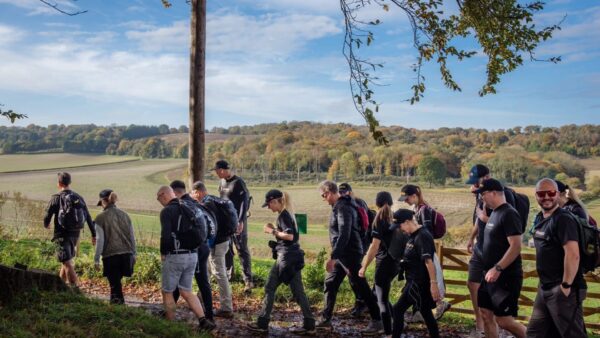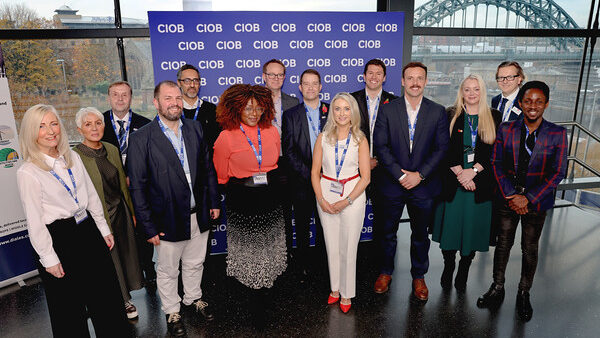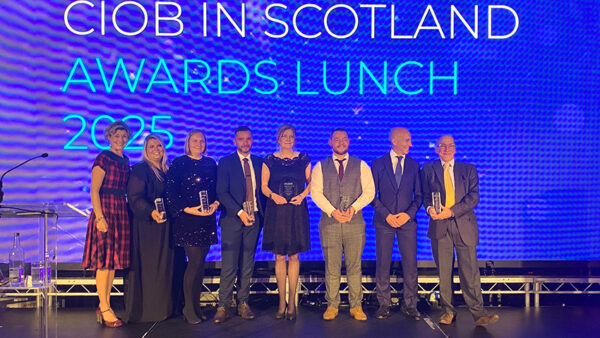
Paul Gardener
Two CIOB members share their experiences of construction in extreme and dangerous environments.
Paul Gardener FCIOB, construction manager, Balfour Beatty
I was working on the Crossrail project as a construction manager at Whitechapel Station for Balfour Beatty Major Projects when I was asked by the Army to support the regular units preparing and deploying to South Sudan.
I was ‘called up’ as a reservist to support 32 Royal Engineers on Operation Trenton 3 (July 2017 to January 2018). I am an ex regular soldier – now reservist, serving with 299 Para Engineer Squadron Royal Engineers.
Me, 14 others from my airborne unit, along with 15 men from a Royal Engineers Commando reserve unit – all volunteered and reported for duty at the mobilisation centre in Nottingham.
After UK-based training I was attached to the Specialist Team Royal Engineers (STRE) as a Class 1 Military Surveyor. This role enabled me to be involved in almost every engineering task that the task force were asked to undertake by the UN.
“If a task needs doing it is done, sometimes in the worst conditions: wet, dry, snakes, malaria, yellow fever, wild dogs, conflict and E coli to name a few.”
Paul Gardener
I surveyed and set out on a daily basis using GPS kit and automatic levels and basic string lines.
My first location was a small UK camp in a place called Malakal, which has a Protection of Civilian (POC) site for 30,000 internally displaced persons (IDPs).
The people in the POC camp have an average space of 1.2 sq m each.
The tasks in Malakal included carrying out surveys for the UK camp infrastructure, surveying and setting out UN helicopter Pads and collaboration with the other Troop Contributing Countries (TCCs).
As this was the wet season the mud/dirt roads are almost unrecognisable as actual roads. This presented a huge logistical challenge for any resource planning for materials and equipment. Basically, if you cannot get it on a UN controlled helicopter, you wait until the dry season when vehicles can move on the dirt roads.
My second location was Bentiu, which is a much larger POC camp than Malakal, housing up to 130,000 IDPs. The main effort in this location was to get started on the UN hospital site, within the “wire” of the UN compound, as well as building hardened accommodation for the camp and future hospital staff. We also improved the camp infrastructure and security.
Again, my main role was to lead the surveying team in gathering survey data for the UN, both within the UN site and also outside on the POC camp side. This data was then expertly converted to CAD by the Royal Engineers STRE draughtsman and then presented to the UN (as the client).
I also assisted with liaising and planning with the UN project managers and other TCCs, especially the Indian Horizontal Maintenance Engineering Company (HMEC) and the Ghanaian Police.
As a chartered construction manager I could never take my safety hat off, but instead of whining about any safety concerns, I was very pro-active in bringing civilian standards of site safety management to the mission.
I introduced a Point of Work Safety Brief and held briefing sessions for all of the junior commanders (lance corporal and corporals). These were the young men and women directing the sappers on site and controlling the work.
This briefing sheet was also used to engage and verify the understanding of the locally employed contractors (LECs) who were operating hired plant machinery and were very much a big part of the tasks.
The construction management style of the army is certainly different than in the civilian world – but that does not mean it is any worse. Discipline is always prevalent and soldiers are expected to do as they are told to the best of their ability. This does not mean they will blindly follow – I witnessed many fantastic safety culture conversations between the youngest sappers and their chain of command.
The Royal Engineers are very highly trained (in a multitude of trades) that operate in tight-knit sections and troops. It is when these various trades are all chipping in and working together that you can really appreciate how good they are.
Regardless of trade – if a task needs doing, it is done, sometimes in the worst conditions that you could imagine: wet season, dry season, snakes, malaria, yellow fever, dengue fever, wild dogs, conflict, and E coli to name but a few of the difficulties.
I would definitely recommend any civil engineering and construction employers take on service leavers from the Royal Engineers. I would also recommend that some of the more senior ranks and officers consider a future professional chartership with the CIOB.
I have been fully supported by Balfour Beatty throughout this process. Balfour Beatty is committed to the Armed Forces Covenant and also provides a number of military programmes for armed service leavers.

Graham Skeer FCIOB, managing director, Skeer Environmental Surveying Solutions
I was one of the many thousand who arrived on the Falklands straight after the war. We had to build very fast, so we had somewhere to live; if you didn’t build it you lived in the empty containers. My job was production controller, which meant you were part QS, materials coordinator, ship manifest manager to allocate materials, plus lots more.
When you arrived on the island you were allocated an area to work. My area was structures north west: ATC Complex, fast jets, navaids, air pilots accommodation, fire station and the fuel storage at Mare Harbour.
We had one haul road from the Merchant of England – the ship anchored to the island where ships from the UK would unload materials for Mount Pleasant.
Services were very basic: we had little or no utilities, no television, no radio, other than any portable radio you brought with you and one telephone to call home in a phone box made of three pieces of plywood nailed together.
The island was bleak and windy, with snow and sunshine all before lunch time. To excavate you had 3m deep of peat and bog, plus the unfortunate discovery of deceased Argentinian soldiers frozen or shot in combat.
Challenges included the measurement issues of quantities; getting around on a daily basis; programming and progressing your schedule; locating your material from other groups who had used it for their projects.
We received a daily site ration delivered by Land Rover, and the labour force shared double bunk rooms although junior execs had their own room and senior execs had room and a shower!
It was a long way from the large facility we left behind.











Comments are closed.